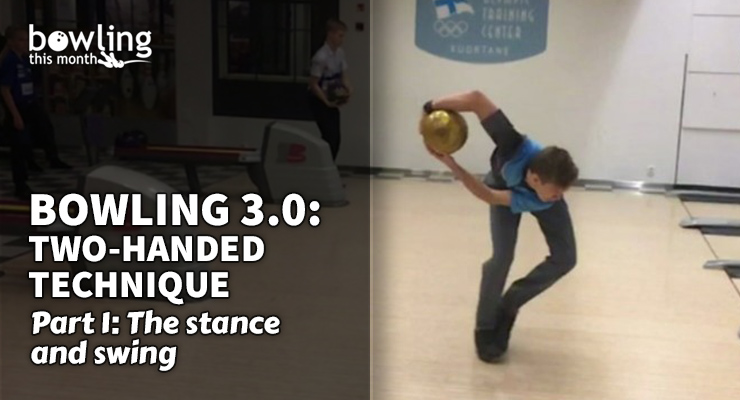Over the past series of articles, we’ve looked at all of the fundamental physical elements of the modern one-handed bowling game. It would be a mistake to think that we’ve concluded a discussion on bowling’s physical evolution without looking at the two-handed technique. More and more youth bowlers adopt the two-handed style as an easy means to generate hook and power, thanks to stars on the PBA Tour like Jason Belmonte, Anthony Simonsen, Jesper Svensson, and Kyle Troup.
I was there 20 years ago when the originators of this style, Jason Belmonte and Osku Palermaa, met for the first time. It was a shock to see a group of Australians with a bowler that resembled my own extremely unique athlete. Somehow, these two bowlers from opposite sides of the world developed a two-handed style that had more similarities than differences. 20 years later, we’ve seen this game evolve to the point that they can be considered first-generation two-handers, with very different techniques from second-generation two-handers, and even the up-and-coming third-generation bowlers opting to use both hands.
Over this series of articles, I’ll discuss some of the fundamental aspects of the two-handed game and how it has evolved. It’s important to highlight some differences from the one-handed game for comparison’s sake, but we must keep in mind that these are totally different styles of play. It is not particularly helpful to discuss each element of the two-handed game in reference to the one-handed style, unless you are a bowler trying to convert. As we’ll see, there are some significant challenges to what I would call converted two-handers compared to “original” two-handers who grow up bowling that way.
To start, let’s discuss some of these basic differences, along with the advantages and challenges of this technique, and then look at the stance and swing for two-handers. Over the next few articles, we’ll follow the same format as we did with the one-handed game, discussing timing, body position, release, etc. in detail.
Differences between one-handed and two-handed technique
The most obvious difference between the two styles is in the swing. While we can easily see some aspects, such as having both hands on the ball throughout the swing, bowlers and coaches often underestimate how completely opposite the swing mechanics really are from the one-handed game. For example, two-handers actively avoid a pendulum-type swing. This is one of the primary challenges ...
This article is only available to Bowling This Month subscribers. Click below to get instant access to this article and all of our other premium instructional content.
Subscribe to Bowling This Month
Already a Bowling This Month subscriber? Click here to log in.
